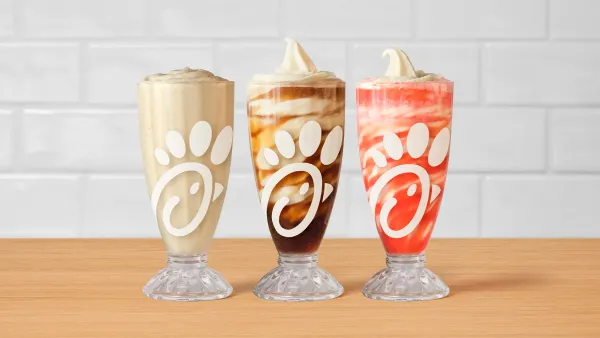Dive Brief:
- Despite deep discounts on select value-meal items, fast food prices have increased out of step with overall U.S. price inflation, reported Bloomberg. The median price for a fast food burger grew 54% over the past decade to $6.95, with the price of a chicken sandwich up 27%.
- Fast casual burger chains such as Shake Shack or Habit Burger charged up to 30% more than fast food in 2012, but that gap has since dwindled to less than 8%. In fact, fast food burger prices have grown by 26% in the last four years, compared to 16% for casual and 8% fast casual and fine dining restaurants alike.
- Food prices at retail and restaurants typically follow similar trajectories but diverged in 2009, according to the USDA.
Dive Insight:
Fast food has been squeezed not only by wages, but also by competition from fast casual chains offering trendy choices. In turn, the industry has diversified menus with fancier items that appeal to lucrative millennials, while simultaneously dropping prices for value-menu items in hopes of getting customers in the door.
Though restaurants of all shapes and sizes have struggled with minimum wage hikes, fast food chains must deal with these changes while sustaining what consumers love about them: speed, familiarity, convenience and value. These changes have been more noticeable in the fast food sector precisely because menu prices — and wages — were so low to begin with.
A 2015 Purdue University study found that a $15 hourly wage would trigger a 4% hike in food prices. That increase would translate to a $3.99 Big Mac hitting $4.16; the average $7 fast food meal would rise to $7.31. The researchers determined that fast food prices would jump considerably (nearly 25%) only when hourly wages surpassed $20, which would mean a 200% raise for workers compared to the 100% raise in $15 an hour.
Fast food has responded by upgrading physical spaces with self-order kiosks and adding table service, communal seating and lounge areas. Menus have gotten a facelift, too, with limited-time offerings and value items — from Burger King’s 10-piece chicken nuggets for $1 to McDonald’s $6 Classic Meal Deal of an entree, a small fry, any size soft drink and a dessert pie. Yet, traffic continues to fall short of expectations, growing not at all or at sluggish rates around 1% earlier this year, according to Restaurant Business.
Many of the factors causing these price hikes remain out of the industry’s control. Wholesale beef prices, for instance, jumped 4% from this time last year, per the USDA’s Food Price Outlook. (They are expected to fall 2% to 3% in 2019.) Accounting for rising wages, that hike partly explains rising burger prices.
Consumers, meanwhile, also have demanded more from their poultry and beef, often making it more expensive for producers, restaurants and themselves. Chipotle and Panera already serve antibiotic-free chicken, for example, while Chick-fil-A, KFC and Taco Bell have developed strategic plans to source such poultry in the near future. The rise in burger prices isn't likely to reflect this particular trend, though, as chains have been far slower to buy into antibiotic-free beef, with only two smaller chains earning A’s on a sourcing scorecard.
The USDA estimates that restaurant prices will continue to climb 2% to 3% in 2019. Restaurants must astutely balance protecting margins and driving traffic, and in the course of making those tough decisions, they must consider how far customers will follow — or where they fall off.









